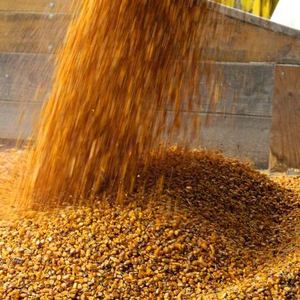USDA: February corn use for fuel ethanol at 434 million bushels

April 27, 2018
BY Erin Krueger
The USDA recently released its Grain Crushings and Co-Products Production report for April, reporting that corn used for fuel ethanol production in February was down from January, but up when compared to February 2017.
Total corn consumed for alcohol and other uses was 482 million bushels in February. Corn consumed for fuel alcohol reached 434 million bushels, down 9 percent when compared to the volume consumed in January, but up 2 percent from February 2017. Corn consumed in February 2018 for dry milling fuel production and wet milling fuel production was 90.7 percent and 9.3 percent, respectively.
Advertisement
Advertisement
Sorghum consumed in February reached 1.815 million hundredweight (cwt) (101,640 tons) in February, down when compared to the 6.45 million cwt consumed during the same month of the previous year. Sorghum consumption data was noted released for January 2018.
Dry mills plants produced 152,279 tons of condensed distillers solubles in February, up from 147,329 tons in January and 115,697 tons in February 2017. Corn oil production reached 164,531 tons, up from 164.325 tons in January and 135,060 tons in February of the previous year. Distillers dried grains production reached 371,026 tons, down from 406,648 tons in January and 373,099 tons in February 2017. Distillers dried grains with solubles production fell to 1.83 million tons, down from 1.99 million tons in January and 1.89 million tons in February 2017. Distillers wet grains production reached 1.26 million tons, down from 1.44 million tons in January, but up from 1.22 million tons in February of the previous year. Modified distillers wet grains production reached 452,351 tons, down from 512,520 tons in January, but up from 405,666 tons in February 2017.
Advertisement
Advertisement
At wet mills, corn germ meal production reached 58,351 tons, down from 62,669 tons in January, but up from 57,560 tons in February 2017. Corn gluten feed production reached 285,466 tons, down from 303,966 tons in January, but up from 269,325 tons in February of the previous year. Corn gluten meal production reached 90,924 tons, down from 91,519 tons in January, but up from 78,780 tons in February 2017. Wet corn gluten feed production fell to 254,749 tons, down from 275,284 tons in January and 292,526 tons in February 2017.
Carbon dioxide captured at dry and wet mills reached 187,762 tons in February, down from 208,318 tons in January, but up from 176,265 tons in February 2017.
Related Stories
Bangkok Airways Public Company Limited has officially announced the adoption of sustainable aviation fuel (SAF) on its commercial flights, reinforcing Thailand’s green aviation industry. The initiative took effect starting July 1, 2025.
Avalon Energy Group LLC and Sulzer Chemtech have signed a strategic alliance and partnership agreement to scale up the production of SAF. Under the agreement, Avalon has selected BioFlux technology for its portfolio of SAF projects.
Neste and DHL Express have strengthened their collaboration with the supply of 7,400 tons (9.5 million liters) of neat, i.e. unblended, Neste MY Sustainable Aviation Fuel to DHL Express at Singapore Changi Airport starting July 2025.
CoBank’s latest quarterly research report, released July 10, highlights current uncertainty around the implementation of three biofuel policies, RFS RVOs, small refinery exemptions (SREs) and the 45Z clean fuels production tax credit.
The U.S. Energy Information Administration maintained its forecast for 2025 and 2026 biodiesel, renewable diesel and sustainable aviation fuel (SAF) production in its latest Short-Term Energy Outlook, released July 8.
Upcoming Events










